
Frontier of International Exchange
Mygdalsky Volodymyr (Faculty of Law, Part-time Lecturer, Doshisha University)
To many young people, Japan is a gDream Countryh by being economically developed and politically stable. As myself being one of them, I still cannot forget the feeling when I first stepped into Japan as a gMonbushoh sponsored as a foreign student about ten years ago.
(more) (japanese)

My Hometown's International Exchange
-Inner Mongol, China:
A Miracle in a Desert
-Inner Mongol, China:
A Miracle in a Desert
Liu Cheng (Faculty of Economics, 3rd Year)
My hometown is Ordos, which is located in Inner Mongolia, China. In Mongolian, Ordos means palace. A long time ago, Genghis Khan went on an expedition to North Asia and he was so impressed with the beautiful landscape that he chose to build his own Imperial mausoleum in Ordos.
(more) (japanese)
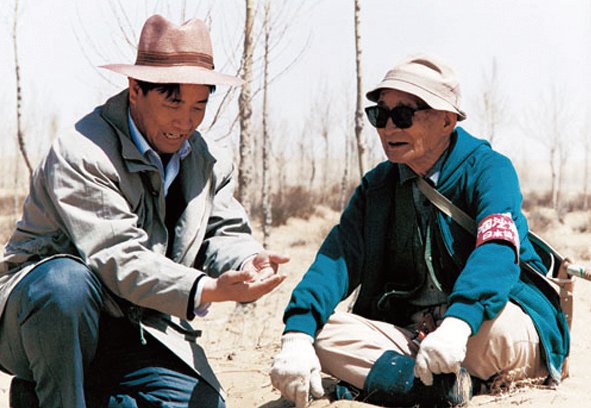
(Photo from
http://okinawaking.ti-da.net/d2009-02.html)
http://okinawaking.ti-da.net/d2009-02.html)
Los Angeles Seminar Report Sponsored by the Kansai Club
Megumi Kawa (Faculty of Social Studies, 3rd Year)
 When we consider the basic notion of American people, its evident that it is based on the Bible, which is different from the Japanese.
(more)
When we consider the basic notion of American people, its evident that it is based on the Bible, which is different from the Japanese.
(more)Introduction of Club Activities
There were many productive students who participated in international exchanges during summer break. Here are some club updates from AFS, SIVIO, DESA, Habitat for Humanity, and the Chinese Student Association.
AFS: Hiroshima Peace Study Association 2010
Miki Maki (Faculty of Letters, 2nd Year)
gHiroshima Peace Study Association in Kyotoh was held at Kyoto Campus Plaza on July 18th.
(more) (japanese)

SIVIO: A Token of My Appreciation
Ranko Fujiwara (Faculty of Economics, 3rd Year)
 SIVIOfs goal is to support the education in Laos and to spread the word about charities in Japan. Two years ago, we successfully built an elementary school in Laos and were able to make an additional building the year after.
(more) (japanese)
SIVIOfs goal is to support the education in Laos and to spread the word about charities in Japan. Two years ago, we successfully built an elementary school in Laos and were able to make an additional building the year after.
(more) (japanese)
DESA: International Exchange
Ruriko Mitsuishi (Faculty of Law, 2nd Year)
 Last spring semester, we had a welcoming party for the Stanford students. We introduced the newcomers by having a nomikai, also known as a Japanese drinking party. Then afterwards, we went to Maruyama Park for a hanami.
(more)
Last spring semester, we had a welcoming party for the Stanford students. We introduced the newcomers by having a nomikai, also known as a Japanese drinking party. Then afterwards, we went to Maruyama Park for a hanami.
(more)
Habitat for Humanity
Kaori Sawada (Faculty of Economics, 4th Year)
 Kokusai-kyojyu-kenkyukai is a campus branch of a NGO called Habitat for Humanity. Every summer and spring holiday, members participate in the Global Village (GV) program where we build houses as a volunteer with the homeowners.
(more)
Kokusai-kyojyu-kenkyukai is a campus branch of a NGO called Habitat for Humanity. Every summer and spring holiday, members participate in the Global Village (GV) program where we build houses as a volunteer with the homeowners.
(more)

Festivals are exciting, lively, and fun. In most countries, festivals are a time for friends and family to get together. We will introduce a variety of festivals from Spain, Poland, United States, Korea, Japan, Indonesia, and China.
Spain: Pamplona Bull Run & La Tomatina
Christian Pedro Calero Mateo (Faculty of Letters, 3rd Year)
Spain is famous for its wild festivals, which captures the culture and essence of the Spanish people. The most famous and dangerous festival is probably the Pamplona Bull Run. It is held every morning from 8am between July 7th to the 14th.
(more)

Poland: Polish Easter Traditions
Greg T. Sadownik (2009-2010 Center for Japanese Language & Culture, SOAS)
 When I lived in Poland for the first eighteen years of my life, I often thought it was the most boring, obvious place on Earth. To my jaded, cynical teenage mind everything around seemed as plain as could be. But then I moved abroad for university, and living first in London and then in Kyoto gave me some perspective.
(more)
When I lived in Poland for the first eighteen years of my life, I often thought it was the most boring, obvious place on Earth. To my jaded, cynical teenage mind everything around seemed as plain as could be. But then I moved abroad for university, and living first in London and then in Kyoto gave me some perspective.
(more)
U.S.A.: The Fourth of July
Elisse Kimie Ota (2009-2010 AKP, Middlebury College)
 There is always a festival going on in Japan. Whether it is country-wide, city-wide or at the local neighborhood shrine, it seems as if you can always find the telltale signs of a festival somewhere: costumes, dancing, music, food c If itfs one thing for sure, the Japanese really know how to party.
(more)
There is always a festival going on in Japan. Whether it is country-wide, city-wide or at the local neighborhood shrine, it seems as if you can always find the telltale signs of a festival somewhere: costumes, dancing, music, food c If itfs one thing for sure, the Japanese really know how to party.
(more)
Korea: Mud Festival
YeWon Lee (Faculty of Letters, 2nd Year)
Mud festival was chosen as the #1 festival that Korean's want to participate. It is held in Boryeong, where it's famous for their mud. Hence, that's how the festival was established.
(more) (japanese)

Indonesia: Celebration of Buddhafs Birthday at Borobudur Temple
Peggy Iida (Graduate of 2008)
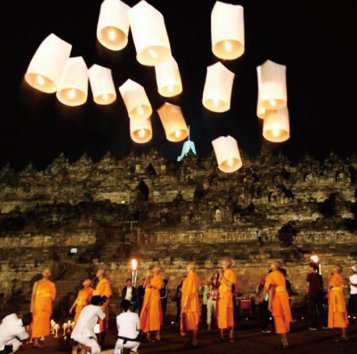 Every year in May, the celebration of Buddhafs birthday is held in Borobudur Temple, which is located in Central Java. In this celebration, a Buddhist monk followed by the visitors, walk around the temple with lanterns and candles in hand. Afterwards, everyone engages in the meditation session where they perform selfreflection. The lantern is a symbol of a manfs soul.
(more)
Every year in May, the celebration of Buddhafs birthday is held in Borobudur Temple, which is located in Central Java. In this celebration, a Buddhist monk followed by the visitors, walk around the temple with lanterns and candles in hand. Afterwards, everyone engages in the meditation session where they perform selfreflection. The lantern is a symbol of a manfs soul.
(more)Japan: Gion Festival @
Yuki Tanikawa (Faculty of Economics, 3rd Year)
 Out of all the festivals in Japan, I would like to introduce the festivals in Kyoto.There is always some sort of festival or Shinto ritual going on in Kyoto. For instance, there is Aoi festival in May, Gion festival in July, and Jidai festival in October.
(more) (japanese)
Out of all the festivals in Japan, I would like to introduce the festivals in Kyoto.There is always some sort of festival or Shinto ritual going on in Kyoto. For instance, there is Aoi festival in May, Gion festival in July, and Jidai festival in October.
(more) (japanese)
Japan: Gion Festival A
Barden Smedberg, Jr. (U.S.A.) (Business School, 2nd Year)
 When returning home, from a foreign country, a sense of success should exist if we grew intellectually while having simultaneously represented our country in a positive manner. The week of July 12, 2010 provided me new knowledge with concerns to Japan's history, traditions, business practices and language.
(more)
When returning home, from a foreign country, a sense of success should exist if we grew intellectually while having simultaneously represented our country in a positive manner. The week of July 12, 2010 provided me new knowledge with concerns to Japan's history, traditions, business practices and language.
(more)
Establishment Meeting for Chinese Exchange
Personnel Fine Art Association of Western Japan
Zhou Weiwei (Business School, 1st Year)
On June 12th, an establishment meeting for the Chinese Exchange Personnel Fine Arts Association of Western Japan was held at the Ikeda public hall in Osaka.
(more) (japanese)
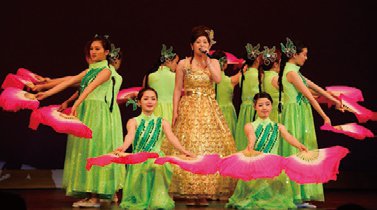

The Colors of Kyoto
JeongMin Han (Faculty of Letters, 2nd Year)
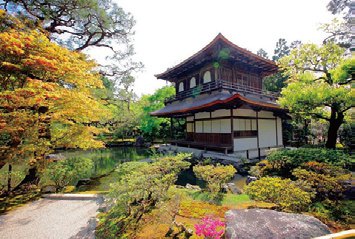 Spring.
Spring.
It's the time of the year when the cherry blossoms are in full bloom. Just imagine how many times the trees have blossomed up to today. Spring shows itself in every corner of Kyoto. To list a few, there is the calm and elegant Ginkakuji, the peaceful Tetsugaku no michi, the well-balanced Nanzenji, and the heroic bridge of Suirokaku which harmonizes well with nature and was built to gather water from the biwako. Cherry blossoms, the representative flower of Japan, fills Kyoto, the city that best represents Japan. (more) (japanese)
International Dating
Ruriko Mitsuishi (Faculty of Law, 2nd Year)
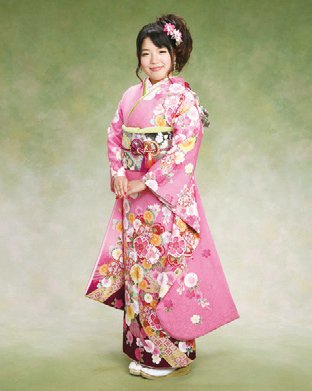 Confession is an important step when you start a relationship. However, ways of confessing love is different depending on countries. Nowadays in Japan, texting is becoming a typical way to ask someone out and even for confession. They first exchange numbers and then send a greeting email like, gHi! It was nice meeting you. Hope to see you soon.h Even if both of them are interested in each other, they will continue to text each other to see how things go. Several weeks later, the guy will ask the girl out and continues to use the cell phone as a tool to express his feelings.
(more)
Confession is an important step when you start a relationship. However, ways of confessing love is different depending on countries. Nowadays in Japan, texting is becoming a typical way to ask someone out and even for confession. They first exchange numbers and then send a greeting email like, gHi! It was nice meeting you. Hope to see you soon.h Even if both of them are interested in each other, they will continue to text each other to see how things go. Several weeks later, the guy will ask the girl out and continues to use the cell phone as a tool to express his feelings.
(more)
Essay Contest: Kimono Belt
Peggy Iida (Graduate of 2008)
I wrote an essay about kimono belts (obi) under the sponsor of Nishijin Maizuru Co., Ltd. and was given an honorable mention.
The reason why I wrote the essay on kimono belts is because I love Japanese traditional clothing. When I was a sophomore in high school, my Japanese friend gave me a handmade yukata (bath robe) with a belt. (more) (japanese)
The reason why I wrote the essay on kimono belts is because I love Japanese traditional clothing. When I was a sophomore in high school, my Japanese friend gave me a handmade yukata (bath robe) with a belt. (more) (japanese)

Astrology ` 120 Degree Aspect
Yu Jinshen (Graduate School of Commerce, 1st Year)
This time I would like to talk about the basic relations of the stars.

The cycle goes through the 12 constellations by starting off with Capricorn and Aquarius in January, Sagittarius in December, and then goes back to Capricorn once again. The stars include Capricorn, Aquarius, Pisces, Aries, Gemini, Cancer, Leo, Virgo, Libra, Scorpio, and Sagittarius. (more) (japanese)

The cycle goes through the 12 constellations by starting off with Capricorn and Aquarius in January, Sagittarius in December, and then goes back to Capricorn once again. The stars include Capricorn, Aquarius, Pisces, Aries, Gemini, Cancer, Leo, Virgo, Libra, Scorpio, and Sagittarius. (more) (japanese)
China: Chinese Spring Festival (Chinese New Year)
Zhou Weiwei (Business School, 1st Year)
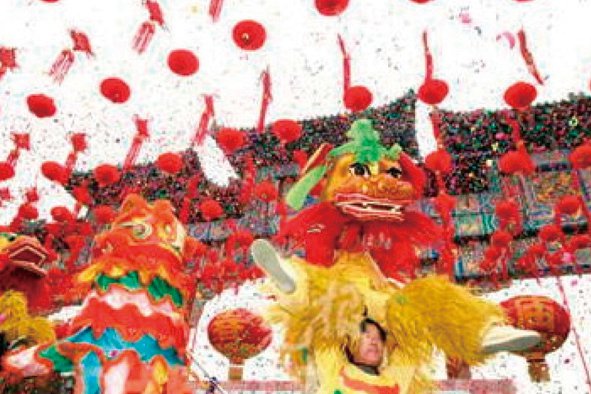 Of all the world's great celebrations, the traditional Chinese New Year or spring festival is possibly the largest. One of the fascinating and unique aspects of the Chinese New Year is the time in which it is held. Unlike Japan, the coming of the New Year is traditionally celebrated in the spring. The reason for this is the ancient use of the Lunar Calendar, which continues to this day.
(more)
Of all the world's great celebrations, the traditional Chinese New Year or spring festival is possibly the largest. One of the fascinating and unique aspects of the Chinese New Year is the time in which it is held. Unlike Japan, the coming of the New Year is traditionally celebrated in the spring. The reason for this is the ancient use of the Lunar Calendar, which continues to this day.
(more)
Review: Festivals in the World
Zhou Weiwei (Business School, 1st Year)
 I am really honored and in the best of spirits to give some of my thoughts in regard to this special piece | Festivals In The World. I have read the articles several times and each time I seem to discover something new. Reading these articles gave me a great sense of what this special time for celebration and family might be like in other countries. I began to question myself as to why I haven't developed a deeper interest in my own home country, China.
(more)
I am really honored and in the best of spirits to give some of my thoughts in regard to this special piece | Festivals In The World. I have read the articles several times and each time I seem to discover something new. Reading these articles gave me a great sense of what this special time for celebration and family might be like in other countries. I began to question myself as to why I haven't developed a deeper interest in my own home country, China.
(more)